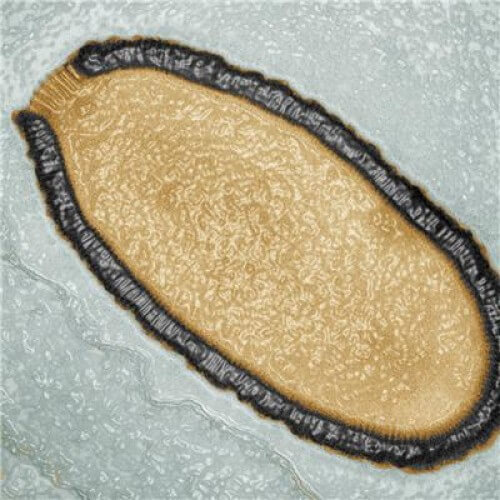Due to the shape of the pitcher, which resembles the Pandora virus, the scientists believed that it was a new member of the Pandora family. However, the analysis of the genome of the phytovirus showed that this is not the case. There is no genetic link between phytovirus and pandora

A new type of virus, called Pithovirus was discovered in the frozen ground of the remote tip of northeastern Siberia by researchers from the Institute of Genomic Structure in France (CNRS/AMU), the Genoscope Institute, the Laboratory of Biology at the Université Joseph Fourier and the Russian Academy of Sciences.
The giant virus that was dug underground, which is not dangerous to humans and animals, survived in freezing for over 30 thousand years. Although its size and pitcher-like shape is reminiscent of the Pandora virus, analysis of its genome and replication mechanism proves that Phytovirus is a different virus. This increases the number of distinct families of giant viruses to three.
The study was published on the PNAS journal website of the American Academy of Sciences on March 3.
In the families Megaviridae (represented by Mimivirus discovered in 2003) and = Pandoraviridae (to which Pandora virus belongs), scientists believed that they had succeeded in classifying the variety of giant viruses. In particular, because these are the only viruses that can be observed with an optical microscope thanks to their diameter reaching half a micron.
These viruses, which attack amoebas such as Acanthamoeba, contain a very large number of genes compared to common viruses (such as influenza or AIDS, which contain 10 genes). In fact, the genomes of these viruses have more genes than many bacteria.
More of the topic in Hayadan:
- Pandora virus - is it the link between viruses and bacteria?
- Mimi Virus - The biggest virus in the world presents: The Invasion
By studying the virus found in the frozen ground of northeastern Siberia in the Chukotka Autonomous Region, the researchers were surprised to discover a new giant virus that is over 30 thousand years old, that is, from the time when the Neanderthal man became extinct. Due to the location of the discovery, the researchers call it Pithovirus sibericum Pithovirus sibericum. Due to the pitcher's shape, which resembles the Pandora virus, the scientists believed that it was a new, albeit ancient, member of the Pandora family. However, the analysis of the genome of the phytovirus showed that this is not the case. There is no genetic relationship between phytovirus and pandora virus. A phytovirus contains only about 500 genes compared to the 2,500 that Pandora virus contains. The researchers also analyzed the protein composition (proteome) of the phytovirus which is 1.5 microns long and half a micron wide and discovered that of the hundreds of proteins that make up the virus, only one or two are found in the Pandora virus.

Another fundamental difference between the two viruses is the way in which they mutate inside the amoeba cells. While the Pandora virus requires the involvement of many of the molecules that function in the amoeba cell in order to replicate, the phytovirus replication process occurs mainly in the cytoplasm, i.e. outside the nucleus of the infected cell, in a manner similar to the behavior of large DNA viruses such as those in the megavirada family. Paradoxically, despite its smaller genome phytovirus relies less on the amoeba's internal mechanisms to thrive. The degree of autonomy from the host cell of the giant viruses does not correspond to the size of their genome which is also not related to the size of the particle that carries them.

One response
In the future, will there be an "agricultural" cultivation of viruses of this type? And this to be a surrogate of genes or part of genetic engineering? Because of its impressive size, it is almost an animal.